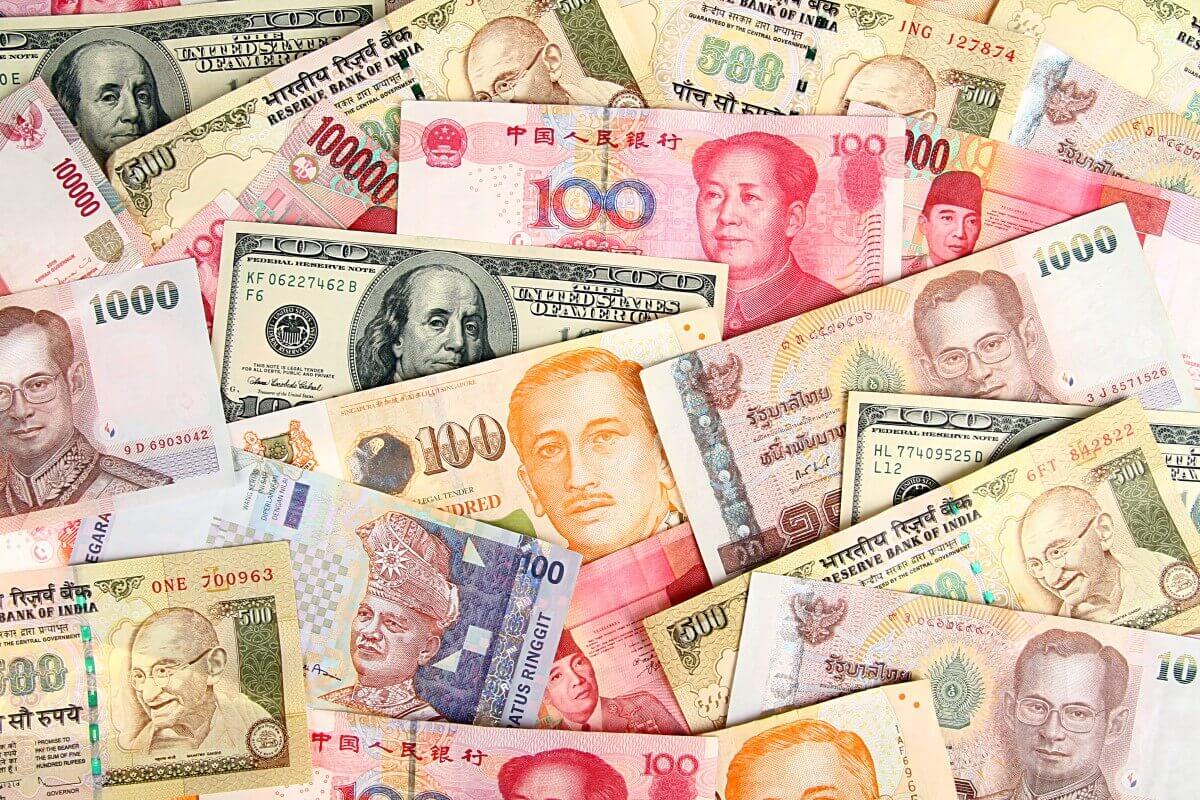The U.S. dollar remained steady on Monday, trading near two-week lows. The U.S. Federal Reserve chief Jerome Powell stated that there is no hurry to dial back on the massive stimulus during Friday’s conference. The dollar struggled after this announcement. According to Powell, tapering could begin this year. However, the Fed Chair also added that the central bank would remain cautious.
Traders have responded to the agency’s statement by moving on the riskier currencies and pushing the dollar index down against its rivals. Consequently, the greenback plummeted down to a fresh two-week low at 92.595. Despite the market’s mood, the dollar managed to steady around 92.66 at last, trading still a touch lower on the day.
Meanwhile, the Japanese yen skyrocketed to its strongest level since last Wednesday, exchanging hands at 109.70 per dollar.
In Europe, overall trade was subdued on Monday due to a bank holiday in Britain. As a result, the euro stood at $1.1804. While the common currency was steady on the day, it remained close to a three-week high of $1.1810 touched in Asian trade.
Vasileios Gkionakis, the global head of FX strategy at Lombard Odier Group, stated that the forex market avoided a hawkish surprise at Jackson Hole. According to him, there could be more downside pressure on the greenback in the near future, but the pressure will likely be short-term. Gkionakis hopes that the economic data will keep going forward.
How did the dollar fare during this month?
All in all, the dollar index has gained about 0.6% during August thus far. On the other hand, the Norwegian crown and New Zealand dollar have led G10 moves against the greenback, soaring by 1.4% and 0.5%respectively. Analysts expect Norway and New Zealand to begin rate hikes within weeks.
Norway’s crown surged forward, hitting a seven-week high against the dollar on Monday. It exchanged hands at 8.6855 crowns per U.S. currency at last.
Norges Bank stated that it plans a September hike. Meanwhile, swaps markets are pricing an 80% chance that the Reserve Bank of New Zealand will also move in October. A coronavirus outbreak delayed an August move. On Monday, New Zealand announced that it is extending a lockdown of its largest city, Auckland, by two weeks.
Meanwhile, Purchasers’ Managing Index figures in the United States and China through the week, and European inflation data, will help the traders to update the picture of the global economy as it faces new obstacles from steadily rising coronavirus cases.
Investors are waiting for U.S. non-farm payrolls report, which is due on Friday. This report is a key focus for forex markets, as well as for the timeline for potential Fed tapering.
The government and companies created 728,000 jobs in the U.S. in August. Most analysts expect the authorities to report additional jobs soon. The range of predictions is extensive, stretching from 375,000 to a million.
Analysts at CBA stated that together with coronavirus trends, U.S. non-farm payrolls due on Friday would influence the Fed’s decision about announcing tapering at the FOMC’s 22 September meeting or postponing it for the future. They also added that another 800,000 jobs should be enough to announce tapering.
What about other Asian currencies?
Most Asian emerging stock markets traded in the green on Monday, led by India, Indonesia, and Singapore. That was primarily due to Powell’s remarks at the Jackson Hole Symposium, as his announcement calmed fears over the tapering timetable.
The South Korean won and the Malaysian ringgit gained the most on Monday in the region. The Indian rupee also amassed strong gains, while the greenback nursed losses.
The won surged forward as much as 0.6%. Meanwhile, the ringgit hit a near two-month high. Analysts at Barclays noted that focus shifts to the U.S. employment report. They also added that forex markets look for evidence of substantial further progress toward maximum employment. Moreover, Barclays expects U.S. non-farm payrolls to increase to 850,000 jobs in August. The data showed 943,000 jobs added in July.
In Thailand, equities soared as much as 1.4%, reaching their highest level since mid-June. At the same time, Singapore shares jumped by 0.9%.
India’s Nifty 50 also skyrocketed to a record high, surging more than 1% in its sixth consecutive session of gains. Traders are now waiting for the June-quarter economic growth data due on Tuesday.
Some experts speculate that the data may show India’s economic growth reaching a record high in the quarter through June. That would reflect a very weak base last year and a recovery in consumer spending.
However, analysts at ING stated that large year-on-year growth rates mask the underlying weakness caused by the latest coronavirus outbreak. That’s truer for India, where the second wave of the pandemic spread over most of the second quarter, becoming far deadlier than the last year.
On Monday, the rupee traded higher by 0.4%, hitting its highest level since mid-June as India attracted foreign direct investment inflows of $22.53 billion during the April-June quarter.











